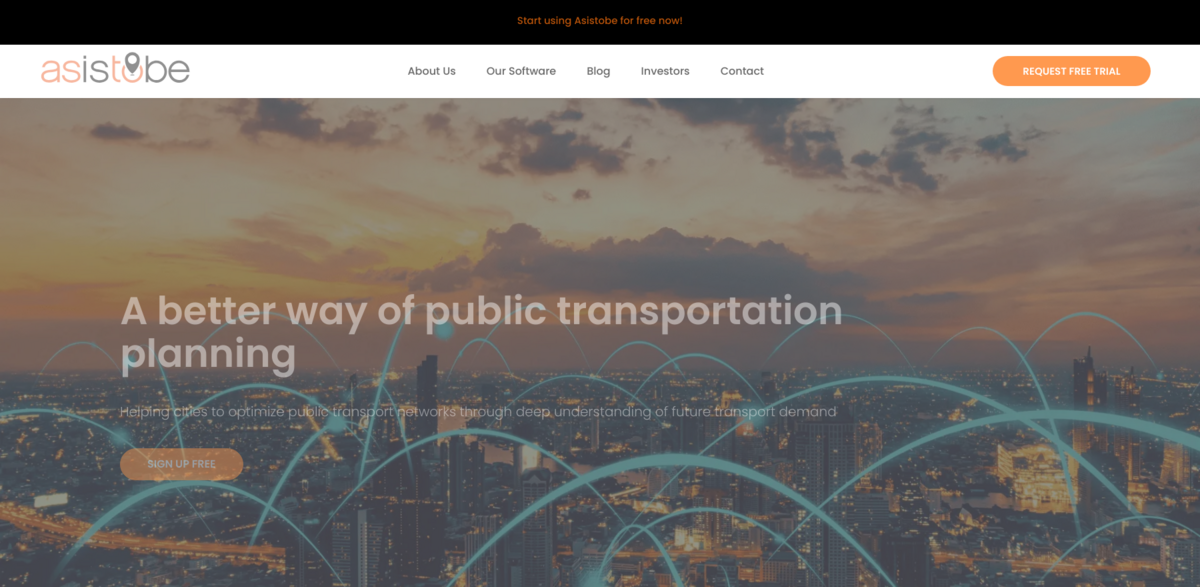What is the Asistobe Project?
Asistobe is revolutionizing public transportation planning by helping cities optimize their transport networks through a deep understanding of future demand. Their software brings together a variety of data sources—public transit info, micro-mobility stats, demographics, and mobile network data—to reveal how people actually move around. Using advanced Artificial Intelligence and Machine Learning, Asistobe forecasts transportation demand with impressive precision, hitting accuracy rates between 85-90%. The goal? To strategically optimize transport networks, making them more efficient, cutting operational costs, and shrinking the carbon footprint. Every journey tells a story, and Asistobe’s software translates those stories into actionable insights, analyzing the entire travel experience—from stepping out the door to arriving at the destination. This ensures public transport systems are designed around real-life scenarios, not just assumptions.
Main Benefits of Asistobe’s Approach
Here’s what makes Asistobe stand out:
- 85-90% accuracy in forecasting transport demand thanks to AI and ML algorithms.
- Integration of multiple data sources, including mobile network data, for a full picture of mobility.
- Reduction in operational costs and carbon footprint through optimized transport networks.
- Real-time insights that replace outdated surveys and interviews.
- Ability to factor in real-world events like concerts or new hospitals to predict demand shifts.
How Data Gathering Shapes the Future
Understanding a city’s mobility ecosystem starts with gathering data from everywhere—mobile networks, cars, trains, buses—you name it. Asistobe merges and decodes these diverse sources to capture real movement patterns. This isn’t just about numbers; it’s about understanding how people truly travel. The result is a rich, detailed map of mobility that forms the foundation for smarter transport planning.
Recognizing Patterns That Matter
Once the data is in, Asistobe’s software gets to work transforming this massive pool of information into clear, understandable mobility patterns. It shines a light on actual transport needs by interpreting how people move throughout the city. This pattern recognition is key—it reveals the hidden rhythms of urban life and helps planners see beyond the obvious.
Predicting Demand with Real-Life Scenarios
Forecasting isn’t just about numbers on a spreadsheet. Asistobe uses powerful AI algorithms to predict public transportation needs with high precision, taking into account real-life events and developments. Whether it’s a rock concert, a new hospital opening, or other city changes, the software stays ahead of the curve, helping planners prepare for what’s coming next.
Project Impact on Sustainable Development Goals (SDGs)
- SDG 11: Sustainable Cities and Communities – by optimizing public transport to be more efficient and accessible.
- SDG 13: Climate Action – through reducing carbon footprints with smarter transport planning.
- SDG 9: Industry, Innovation, and Infrastructure – leveraging AI and data integration for innovative urban solutions.
- SDG 3: Good Health and Well-being – by promoting cleaner, more reliable public transport options.
- SDG 17: Partnerships for the Goals – combining data from multiple sectors to improve city mobility.
Measuring Success and Adapting for the Future
With Asistobe’s insights, cities can measure how well their transportation strategies are working and adjust on the fly. The software reveals the ripple effects of changes, allowing planners to anticipate evolving transport scenarios and respond proactively. It’s a continuous cycle of measure, adjust, and thrive—ensuring public transport stays aligned with the real needs of its users. No more guesswork, just accurate, actionable insights that keep cities moving forward.





















